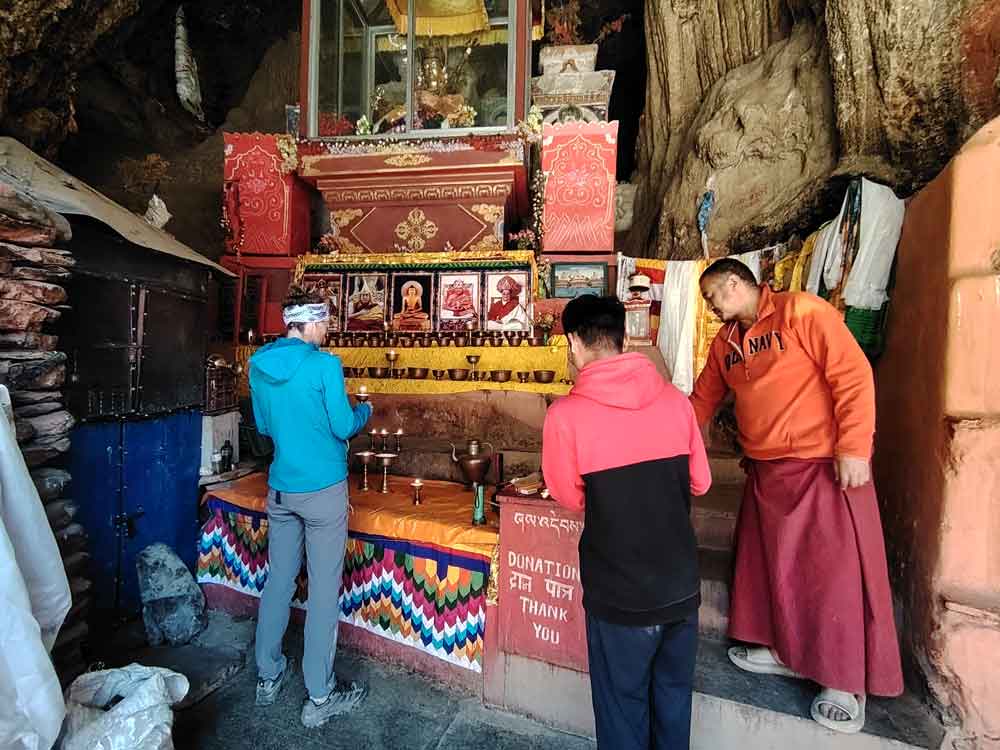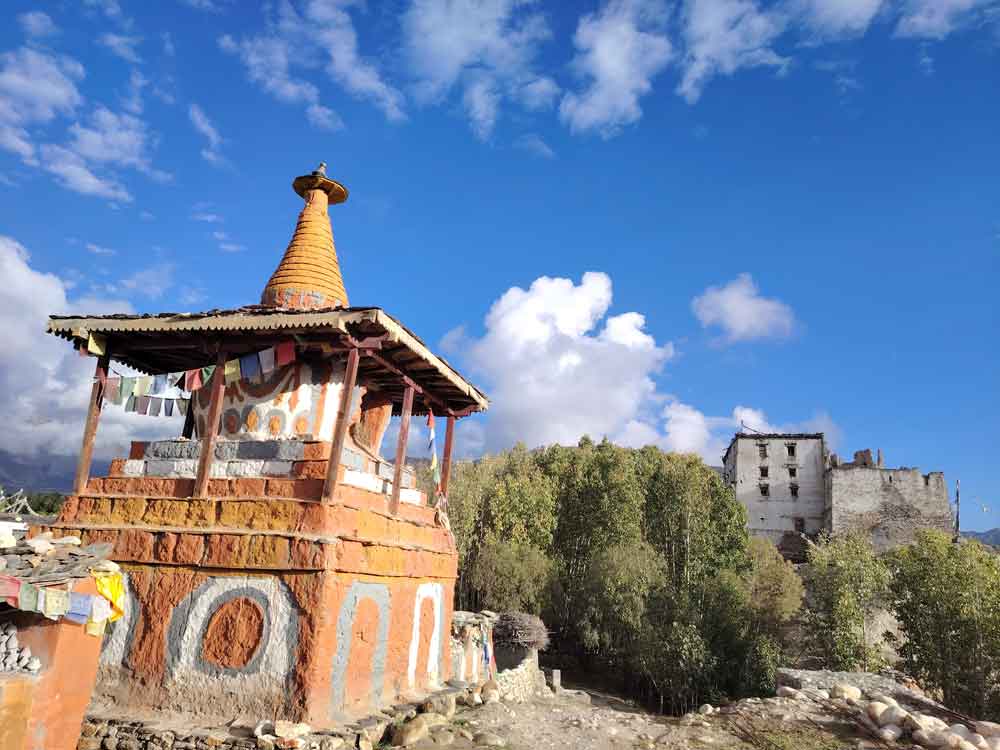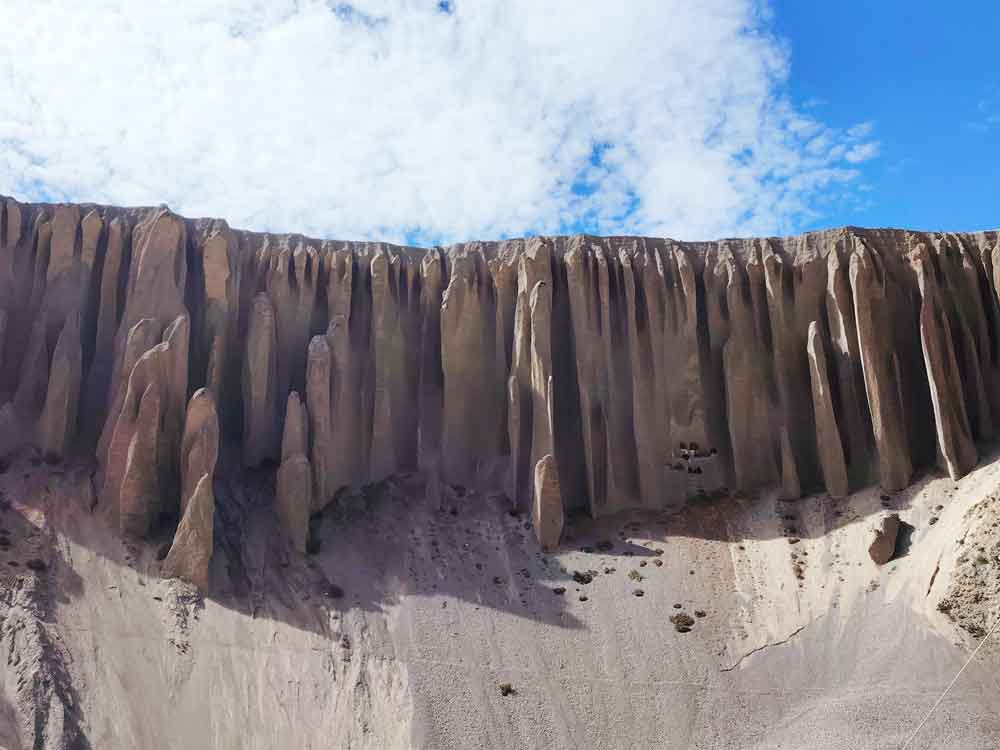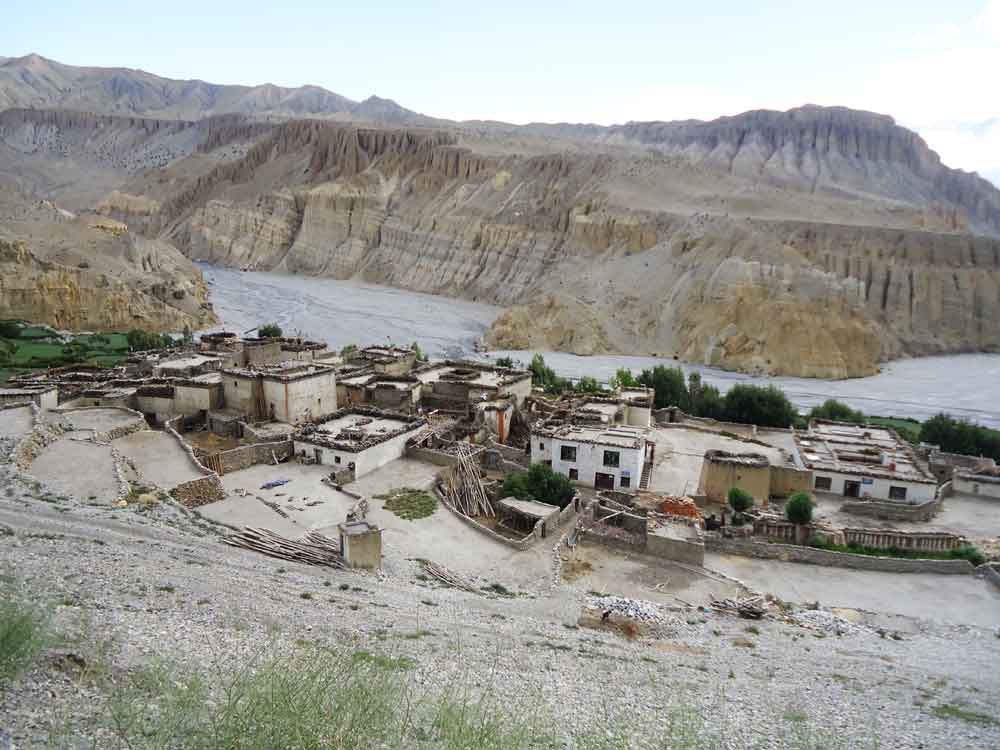
Upper Mustang trekking officially opened in 1992. It was almost completely forbidden for foreigners until then. Upper Mustang is known as the land of rain shadow, so the landscape is harsh and arid. The culture and traditions are distinctly attractive, thousands of years old monasteries, Buddhist culture, stupas, ancient caves, and hidden villages are the myth and facts attractions of Upper Mustang. It allows a limited number of trekkers each year to protect and conserve the local Tibetan tradition and the fragile environment. Trekking into this fabled forbidden kingdom of vast, arid valleys, eroded canyons, ochre valley, yak caravans, and colorful-painted mud brick houses on the backdrop of majestic mountains, Annapurna, Dhaulagiri, Nilgiri, and Tukuche makes the Mustang trek a very special experience.
In the upper Mustang's well-known and dominant city, Lo Manthang is the ultimate destination. Lo means a remote Himalayan province, while Manthang means an abundant place of beauty and happiness in the Tibetan language. In upper Mustang, real Tibetan Buddhism, lifestyles, religion, art, and cultures remain well preserved. During the 15th and 16th centuries, the acquisition of immense fortunes from the salt trade made Mustang a highly prosperous kingdom. Mustang became an important transit point on the salt trade route between Tibet and the large markets for salt in lowland Nepal and India. Later, due to the decline of the salt trade, agriculture and animal husbandry became the most important occupations of the people. Still, a little Himalayan kingdom exists in Upper Mustang with a local king (who just passed away) of Lo-Monthang, whose title has been given the honorary rank of Colonel in the Nepal army. Nowadays, the son of the passed King is taking the rule.
Lo-Manthang: remote, hidden, the land of happiness and beauty, where the soul of a human is still considered to be as real as the feet he/she walk. They are very rich in culture and tradition, and also strongly believe in Himalayan Buddhism. They have different ceremonies. Among them, they have three kinds of funeral cremations: burning cremation, sky burial cremation, and vulture feeding cremation. The vulture feeding ceremony is much more meaningful and quite strange; however, it is a usual practice in the fold of the hidden paradise at Lo-Manthang. The last forbidden Kingdom of Mustang has a lot of culture, tradition, and carnivals. Tiji Festival is one of the most dominant among them in Lo-Manthang. The Tiji festival is a three-day-long ceremony, and it is believed that the festival of good luck for harvesting and bad luck or demon chasing. Over the festive time, monks dressed in elaborate costumes and masks perform dances and rituals that are supposed to drive away evil spirits. Dressed in their finery, people from all over Mustang gather in Lo Monthang to celebrate the Tiji festival.

Upper Mustang has very important and special Buddhist Monasteries such as Lo- Ghekar, Luri Gumba, Ngiphu Gumba, Tsarang Gumba, ancient ruins of the castle, sky caves, Mysterious caves such as Jhong, and mystic passes to Tibet, including Korolla Pass. The lifestyle of Mustangees reflects the primitive life of Bhot or Tibet. The unique Buddhist culture, animal husbandry, agricultural system, and house construction design show hundreds of years old Tibetan character. Yak Caravan, goats pasturing, traveling on horses, drinking butter tea, and eating CHAMPA are their major traditions in Upper Mustang. However, things are slowly changing due to the modern lifestyle and transport facilities.

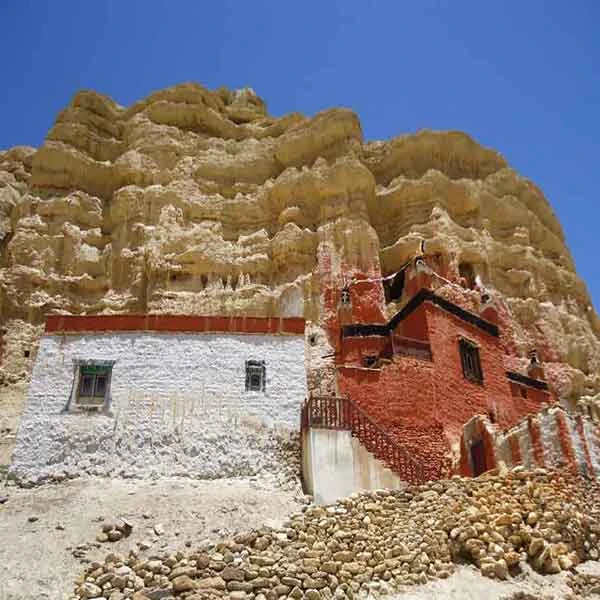
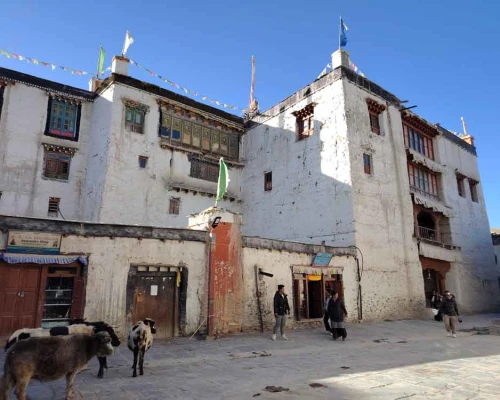
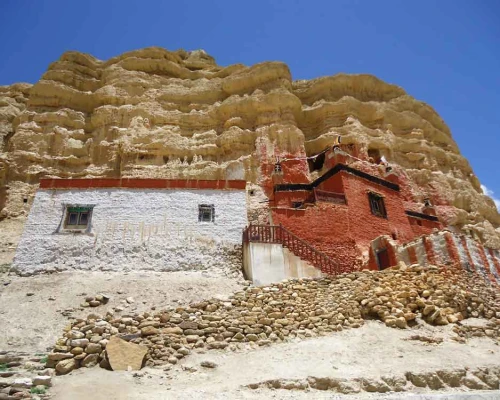
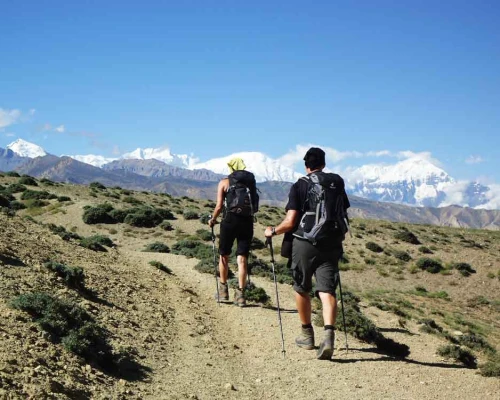
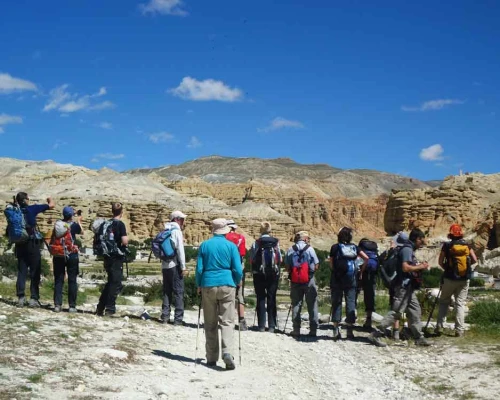
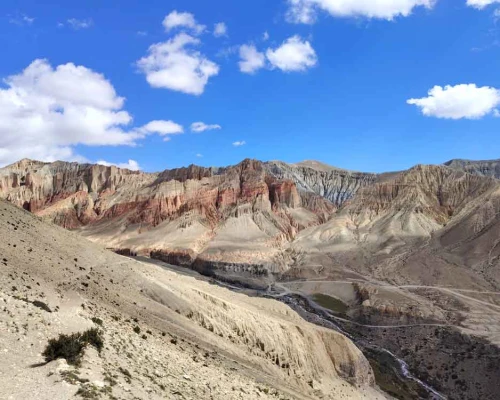
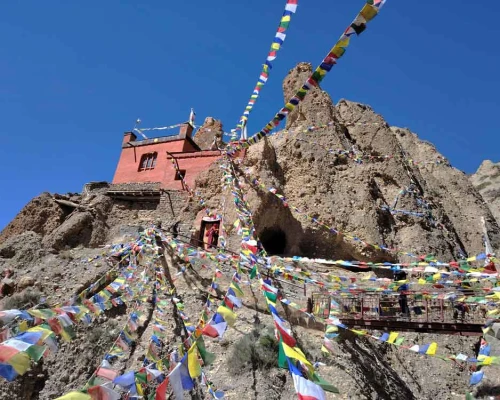
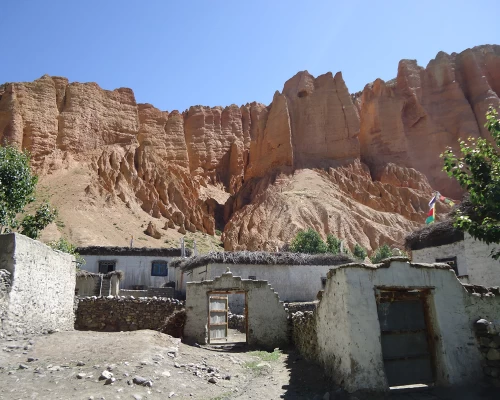
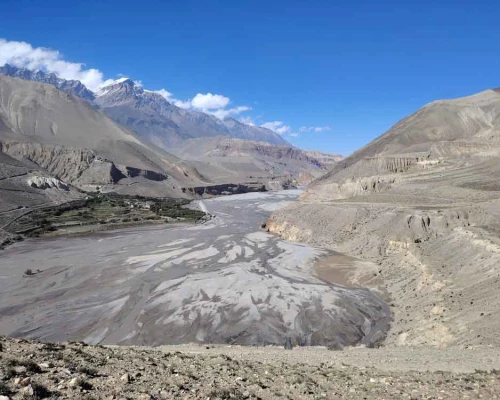
 Start your Jeep drive just after breakfast, and drive through the beautiful arid landscape that starts from Marpha. It is often very windy and dusty Jomsom valley. Mt. Dhaulagiri, Nilgiri, and Tilicho peaks are often mirroring along the way. Check your permit at Jomsom Bazaar and follow the Riverbank drive to Kagbeni. Stop here for a while and take a short explore. Drive along the windy riverbank ahead to Tangbe and Chhuksang. Make a lunch break at Chhuksang, there is a check post for your special permit. Make a short trip during your lunch preparation and drive again towards Chele village in Samar for the final Jeep stop. Overnight at the hotel in Samar.
Start your Jeep drive just after breakfast, and drive through the beautiful arid landscape that starts from Marpha. It is often very windy and dusty Jomsom valley. Mt. Dhaulagiri, Nilgiri, and Tilicho peaks are often mirroring along the way. Check your permit at Jomsom Bazaar and follow the Riverbank drive to Kagbeni. Stop here for a while and take a short explore. Drive along the windy riverbank ahead to Tangbe and Chhuksang. Make a lunch break at Chhuksang, there is a check post for your special permit. Make a short trip during your lunch preparation and drive again towards Chele village in Samar for the final Jeep stop. Overnight at the hotel in Samar.